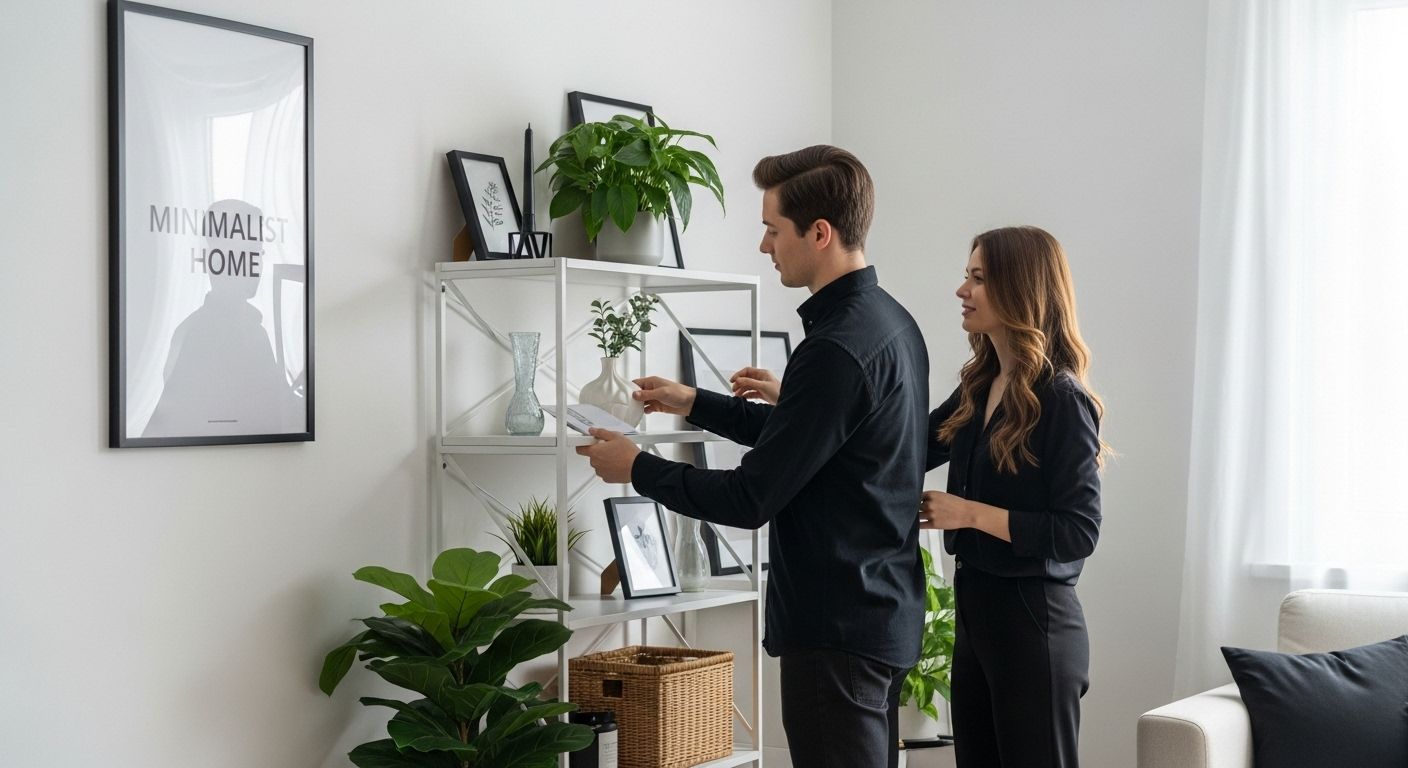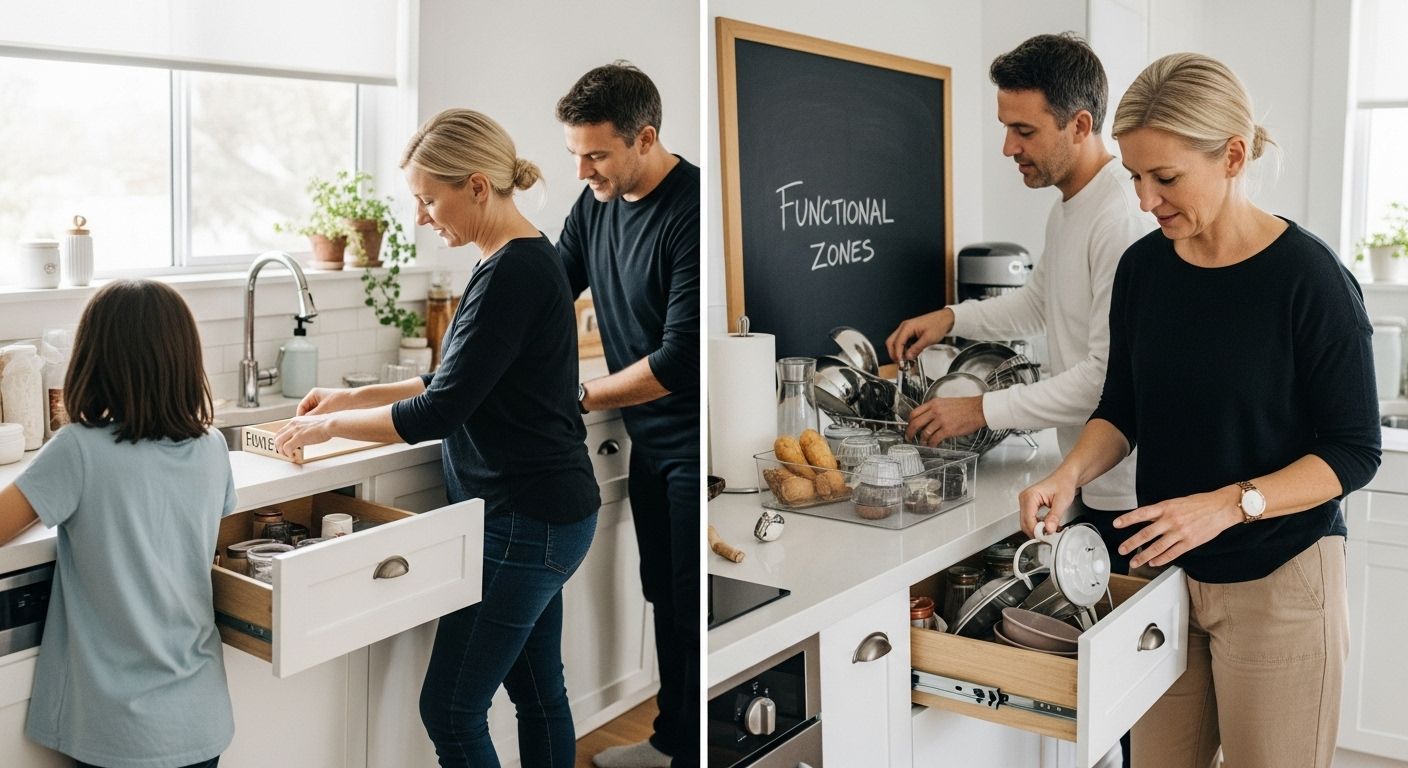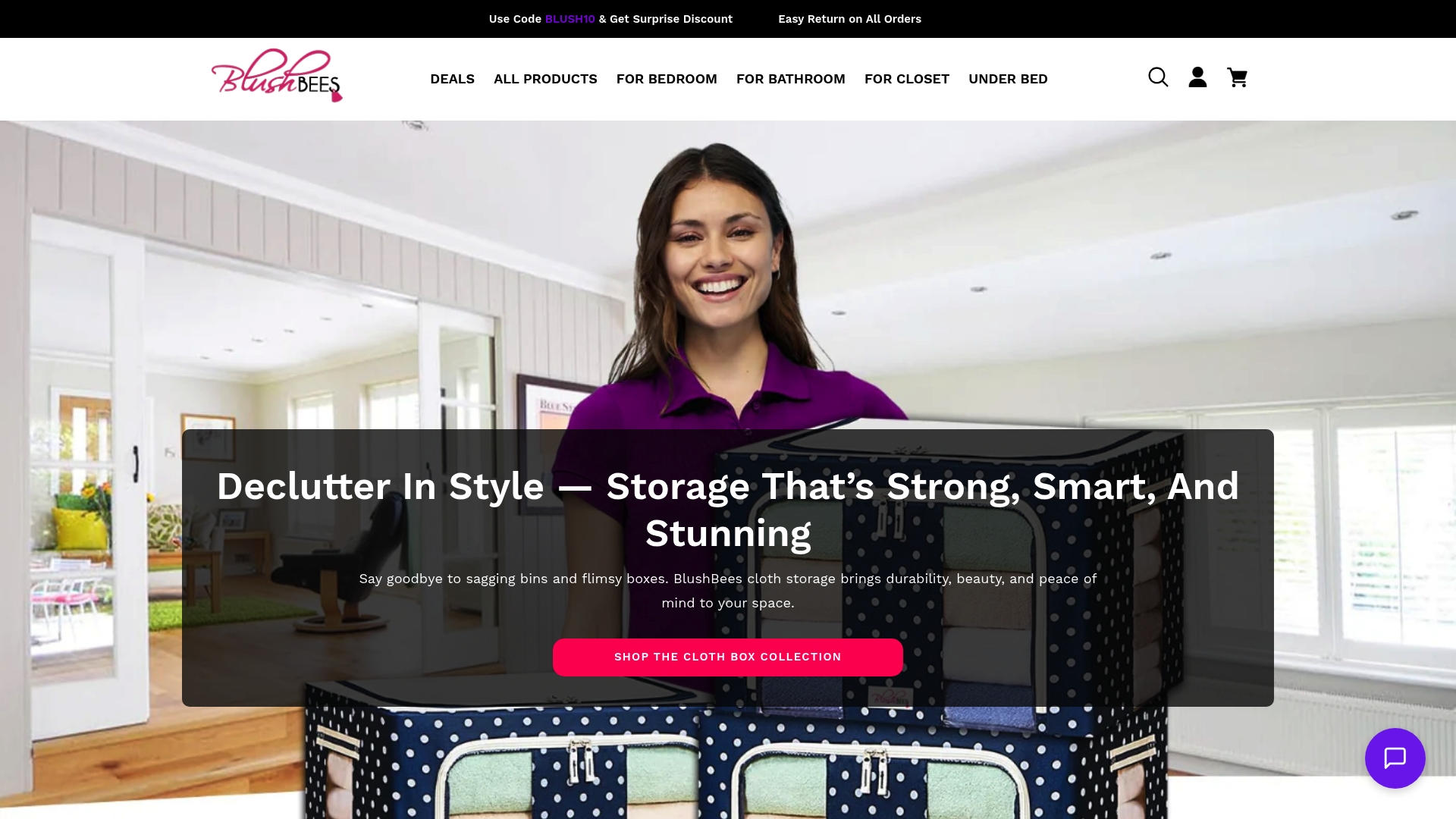

Minimalist home organization is catching plenty of attention right now. People might picture empty rooms and sparse shelves, but minimalism is far more powerful than just keeping things tidy. Studies show that minimalist methods can actually lead to reduced stress and improved mental focus, making it about peace of mind as much as clean countertops. That shift from looks to true wellbeing is where the real surprise begins.
Table of Contents
- Defining Minimalist Home Organization: What It Is And Its Principles
- The Importance Of Minimalist Home Organization: Why It Matters
- Core Concepts Of Minimalist Home Organization: Key Ideas Explained
- Practical Applications Of Minimalist Home Organization: How It Works In Real Life
Quick Summary
| Takeaway | Explanation |
|---|---|
| Prioritize intentionality in belongings | Only keep items that serve a purpose or bring joy to enhance personal satisfaction. |
| Focus on quality over quantity | Select fewer, high-quality items to create a more functional and aesthetically pleasing space. |
| Implement the 3-month rule for decluttering | Regularly evaluate items not used in 90 days to prevent clutter build-up and promote mindful living. |
| Create functional organizational zones | Establish defined areas for specific categories to streamline access and maintain order in living spaces. |
| Embrace simplicity and visual clarity | Aim for clean lines and uncluttered surfaces to enhance mental clarity and support emotional well-being. |
Defining Minimalist Home Organization: What It Is and Its Principles
Minimalist home organization represents a strategic approach to creating living spaces that prioritize simplicity, functionality, and intentional design. Unlike traditional organizational methods, this philosophy focuses on reducing physical clutter while simultaneously enhancing personal wellbeing and aesthetic appeal. Explore our guide on stylish organization techniques to understand this transformative concept.
The Core Philosophy of Minimalist Organization
At its essence, minimalist home organization is about making conscious choices about the items we keep and the spaces we inhabit. According to research from the National Center for Biotechnology Information, this approach goes beyond mere tidying and represents a holistic lifestyle strategy that supports psychological health by eliminating unnecessary distractions.
Key principles of minimalist home organization include:
- Intentionality: Every item in your space must serve a specific purpose or bring genuine joy
- Quality over Quantity: Selecting fewer, high-quality items that are versatile and meaningful
- Visual Simplicity: Creating clean lines and uncluttered surfaces that promote mental clarity
Psychological and Practical Benefits
The minimalist approach to home organization delivers profound benefits that extend far beyond aesthetic appeal. By strategically reducing physical possessions, individuals can experience reduced stress, improved mental focus, and a greater sense of control over their living environment.
This methodology encourages people to critically evaluate their belongings, asking fundamental questions like “Do I truly need this?” and “Does this item enhance my life?” The result is a curated living space that reflects personal values and supports daily functionality, transforming homes from mere storage zones into intentional, peaceful sanctuaries.
To help readers grasp the psychological and practical benefits of minimalist home organization, the table below summarizes and contrasts these core advantages.
| Benefit Type | Description | Key Outcomes |
|---|---|---|
| Psychological Benefits | Enhances emotional well-being by minimizing visual chaos and distractions | Reduced stress, improved mental focus, emotional freedom |
| Practical Benefits | Supports daily living through efficient use of space and functional design choices | Streamlined routines, efficient spaces, greater control |
| Self-Awareness | Encourages reflective thinking about values and possessions | Increased clarity about needs and priorities |
| Lifestyle Improvement | Promotes intentional consumption and personal growth | More meaningful interactions, purposeful living |
The Importance of Minimalist Home Organization: Why It Matters
Minimalist home organization transcends simple tidiness, emerging as a transformative lifestyle approach with profound psychological and practical implications. Dive into our practical home organization tips to understand how strategic decluttering can revolutionize your living environment.
Psychological Impact of Organized Spaces
Research from the journal Sustainable Production and Consumption reveals that minimalist practices significantly contribute to emotional well-being. By reducing visual and physical clutter, individuals experience decreased stress levels and enhanced mental clarity.
![]()
The act of purposefully curating living spaces becomes a form of self-care, allowing people to create environments that actively support their mental health.
Key psychological benefits include:
- Reduced Cognitive Load: Less visual chaos means fewer distractions and improved focus
- Emotional Liberation: Letting go of unnecessary possessions can create a sense of freedom
- Increased Self-Awareness: Mindful organization encourages reflection on personal values and priorities
Practical Lifestyle Transformation
Beyond mental health, minimalist home organization offers tangible lifestyle improvements. It encourages intentional consumption, promotes efficient use of living spaces, and creates aesthetically pleasing environments that reflect personal values. The methodology is not about living with less, but about living with purpose and making deliberate choices about the items that truly matter.
By adopting minimalist organizational principles, individuals can create living spaces that are not just visually appealing, but functionally superior. These curated environments become powerful tools for personal growth, enabling more meaningful interactions with our immediate surroundings and fostering a sense of control and intentionality in our daily lives.
Core Concepts of Minimalist Home Organization: Key Ideas Explained
Minimalist home organization is a nuanced approach that goes beyond simple tidying, representing a comprehensive philosophy of intentional living. Discover space saving techniques for stylish homes to understand how strategic design can transform living spaces.
Fundamental Design Principles
According to research on minimalist architecture, minimalist home organization centers on several core design principles. These principles are not just aesthetic choices but deliberate strategies for creating functional, peaceful living environments. The approach emphasizes simplicity, functionality, and purposeful design that eliminates unnecessary visual and physical complexity.
Key design principles include:
- Simplicity in Form: Prioritizing clean lines and uncluttered surfaces
- Functional Clarity: Ensuring every item and design element serves a specific purpose
- Visual Harmony: Creating spaces that feel balanced and serene
Material and Spatial Considerations
Minimalist home organization transcends mere visual aesthetics by focusing on material quality and spatial efficiency. This approach involves selecting high-quality, versatile items that serve multiple functions and can withstand long-term use. The goal is not to create sparse or sterile environments, but to craft spaces that are both beautiful and highly functional.
By embracing these core concepts, individuals can transform their living spaces into intentional sanctuaries that support mental clarity, reduce stress, and create a sense of calm. Minimalist home organization is ultimately about making conscious choices that reflect personal values and create environments that genuinely enhance daily living experiences.
The following table organizes fundamental principles of minimalist home organization and explains how each one shapes a stylish and functional living space.
| Principle | What It Means | Impact on Space |
|---|---|---|
| Intentionality | Keep items that serve a purpose or bring joy | Personalized and meaningful arrangements |
| Quality Over Quantity | Select fewer, high-quality, versatile pieces | Enhanced aesthetics, durability, and utility |
| Simplicity in Form | Use clean lines and uncluttered surfaces | Promotes calm and visual clarity |
| Functional Clarity | Ensure every item and area fulfills a clear purpose | Increases efficiency and order |
| Visual Harmony | Create balanced, serene environments | Supports relaxation and mental clarity |
Practical Applications of Minimalist Home Organization: How It Works in Real Life
Transforming theoretical minimalist principles into everyday practice requires strategic thinking and deliberate action. Learn simple decluttering tips for organized living to understand how these concepts translate into tangible home improvements.
Creating Functional Organizational Zones
According to experts in sustainable living, successful minimalist home organization begins with intentionally naming categories and defining specific zones within living spaces. This approach goes beyond random tidying, instead establishing systematic areas where similar items are strategically grouped and easily accessible.
Key strategies for creating functional zones include:

- Category Mapping: Identifying logical groupings for household items
- Purpose-Driven Placement: Arranging items based on frequency of use
- Visual Clarity: Ensuring each zone has a clear, defined purpose
Sustainable Decluttering Techniques
Minimalist home organization is not a one-time event but an ongoing process of mindful curation. Implementing the 3-month rule—where items unused for 90 days are critically evaluated for retention—helps prevent unnecessary accumulation. This approach encourages individuals to make intentional decisions about possessions, recognizing that clutter often results from delayed choices.
By adopting these practical techniques, individuals can transform their living spaces into streamlined, efficient environments that support daily routines and reflect personal values. Minimalist home organization becomes less about perfection and more about creating spaces that genuinely enhance quality of life.
Bring Minimalist Organization to Life with BlushBees
You’ve just learned how intentional design and streamlined storage can turn cluttered rooms into peaceful refuges. But knowing the principles is only the first step. Many readers struggle to maintain tidy spaces that truly reflect their personal style and values, especially when lack of practical storage solutions leads to ongoing clutter. Minimalist home organization is about more than getting rid of things. It’s about curating your essentials and displaying them with elegance. That’s where our Bedroom Storage collection steps in—designed to match minimalist values with functional style for every corner of your home.

Transform your home from overwhelmed to organized today. Visit https://blushbees.us to explore smart, space-saving products that are both beautiful and practical. Want to bring order to more of your daily routine? Discover our easy-to-use Bathroom Storage solutions and experience firsthand how simplicity creates lasting peace of mind.
Frequently Asked Questions
What is minimalist home organization?
Minimalist home organization is a strategic approach that prioritizes simplicity, functionality, and intentional living. It focuses on reducing clutter and enhancing personal wellbeing by making conscious choices about the items we keep in our living spaces.
What are the benefits of adopting a minimalist home organization approach?
The benefits include reduced stress levels, improved mental clarity, increased self-awareness, and a greater sense of control over your environment. It encourages intentional choices about possessions, which can lead to a more functional and aesthetically pleasing home.
How can I start organizing my home minimally?
To begin, identify categories of items and create functional organizational zones within your home. Use techniques like the 3-month rule to evaluate items you haven’t used in a while and focus on keeping high-quality, versatile possessions that serve specific purposes.
What are some important principles of minimalist home design?
Key principles include intentionality, prioritizing quality over quantity, simplicity in form, and functional clarity. These principles aim to create living spaces that are balanced, serene, and efficient while reflecting personal values.



